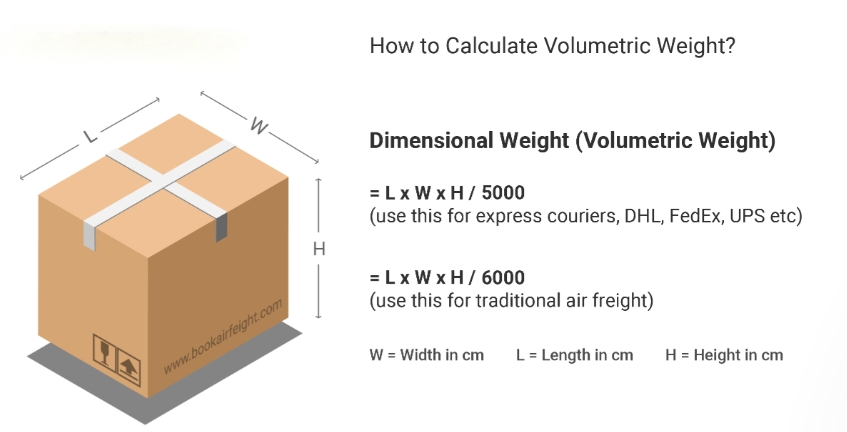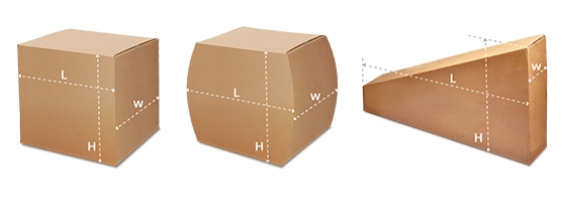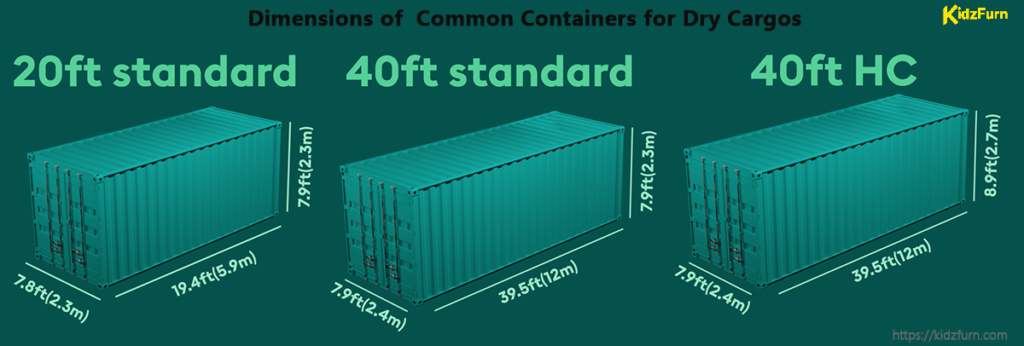I. Introduction
As a manufacturer deeply involved in China-US trade, we understand its critical importance for B2B buyers. In 2023, the bilateral trade volume between China and the US reached an impressive $664.45 billion, highlighting the robust economic relationship between these two powerhouses. For B2B buyers, this trade flow represents immense opportunities for sourcing products, expanding product lines, and optimizing supply chains. The main shipping options available for B2B buyers include:
- Sea Freight: Ideal for large, bulky shipments
- Air Freight: Suitable for time-sensitive or high-value goods
- Express Shipping: Perfect for urgent, smaller shipments
Each method offers unique advantages, and we’ll help you choose the best option based on your specific needs.
II. What are the Costs of Shipping from China to the US?
Shipping costs vary widely depending on several factors. Here’s a breakdown of current pricing:
How much is shipping from China to the US?
- Air Express: $7.54 to $9.54 per kilogram
- Air Freight: $3.40 to $15.50 per kilogram
- Sea Freight: $1,200-$1,850 per container
How much does a container from China to the US cost?
- 20ft container: $1,200-$3,000
- 40ft container: $2,000-$4,500
These prices fluctuate based on market conditions, fuel prices, and seasonal demand.
How much does LCL from China to the US cost?
Less than container load (LCL) shipping costs are based on the volume and weight of the shipment:
- Volume-based cost: $25 – $140 per cubic meter (CBM).
- Weight-based cost: $0.5 – $0.7 per kg.
Note: Sea freight rates change frequently during the pandemic. Please directly email us to get the real-time quotation.
What factors affect shipping costs?
Several factors influence shipping costs:
- Shipping method: Sea freight, air freight, and express shipping have different cost structures.
- Cargo weight and volume: Heavier and larger shipments cost more.
- Destination: Shipping costs vary based on the final delivery location in the US.
- Season and peak periods: Rates can increase during peak seasons like holidays.
- Fuel prices: Fluctuations in fuel prices impact overall shipping costs.
III. How Long Does Shipping from China to the US Take?
What’s the average time to ship from China to the US?
The average transit time varies by shipping method:
- Sea freight: 20-30 days port to port.
- Air freight: 5-10 days.
- Express shipping: 3-5 days.
How do shipping times vary by method?
- Sea freight: Best for non-urgent, large shipments. It takes the longest but is cost-effective.
- Air freight: Suitable for medium-sized shipments needing quicker delivery. More expensive than sea freight.
- Express shipping: This is the fastest option for urgent and small shipments. Most expensive.
What factors can affect shipping duration?
Several factors can impact shipping duration:
- Weather conditions: Can cause delays, especially for sea freight.
- Customs clearance time: Delays in documentation or inspections can extend shipping times.
- Seasonal demand: High demand during peak seasons can slow down shipping processes.
- Port congestion: Busy ports can cause delays in loading and unloading cargo.
IV. What’s the Best Way to Ship Samples from China?
Which methods are suitable for B2B sample shipments?
For B2B sample shipments, the most suitable methods are air freight and express shipping. These options provide a balance between cost and speed, ensuring samples arrive quickly without incurring excessive costs.
How to balance cost and speed for samples?
- Air Freight: Ideal for samples weighing between 45 kg and 200 kg. Costs range from $4 to $8 per kg, with transit times of 5-10 days.
- Express Shipping: Suitable for smaller samples under 45 kg. Costs range from $5 to $10 per kg, with transit times of 3-5 days.
V. How is Weight Calculated for Shipping from China?
What’s the difference between dimensional weight and actual weight?
- Dimensional Weight: Calculated based on the volume of the shipment. It is determined by multiplying the length, width, and height of the package and dividing by a dimensional factor (e.g., 5000 for cm).
- Actual Weight: The physical weight of the shipment measured on a scale.
How do carriers determine chargeable weight?
Carriers use the greater of actual weight or dimensional weight. The dimensional weight formula is:(Length x Width x Height) / Dimensional FactorFor international shipments, the dimensional factor is typically 166 for inches or 6,000 for centimeters.

Example: A package measuring 12″ x 12″ x 12″ with an actual weight of 2 lbs:
Dimensional weight = (12 x 12 x 12) / 166 = 10.41 lbs
The chargeable weight would be 10.41 lbs, not 2 lbs.
Try not to overpack a box or use uneven box shapes, or you might get charged for oversize.

VI. Who Can Help Manage Shipping from China to the US?
What role do freight forwarders play?
Freight forwarders act as intermediaries, managing the entire shipping process. They:
- Arrange transportation
- Handle documentation
- Negotiate rates with carriers
- Provide tracking and insurance options
How can customs brokers assist?
Customs brokers specialize in clearing goods through customs. They:
- Prepare and submit customs documentation
- Calculate and pay duties and taxes
- Ensure compliance with import regulations
How to select the right logistics partners?
- Evaluate experience with China-US trade
- Check for relevant certifications (e.g., IATA, FMC)
- Assess technology and tracking capabilities
- Consider their network in both China and the US
VII. How to Choose the Cheapest International Shipping from China to the US?
What strategies can reduce shipping costs?
- Consolidate Shipments: Combine smaller shipments into one larger shipment to take advantage of bulk rates.
- Flexible Schedules: Shipping during off-peak times can reduce costs.
- Optimize Packaging: Use efficient packaging to reduce dimensional weight.
How do different shipping methods compare in cost-effectiveness?
For a 500kg shipment from Shanghai to Los Angeles:
- Sea Freight: $1,000-$1,500, 30-40 days
- Air Freight: $2,500-$3,500, 5-10 days
- Express Shipping: $5,000-$7,000, 3-5 days
Sea freight is most cost-effective for large, non-urgent shipments. Air freight balances cost and speed for mid-sized, time-sensitive cargo.
VIII. What Container Options are Available for Shipping from China to the US?
What types of containers can be used?
- 20ft container: 33 cubic meters, max load 28 tons
- 40ft container: 67 cubic meters, max load 29 tons
- 40ft High Cube: 76 cubic meters, max load 29 tons
How to choose the right container for your cargo?
- Calculate total cargo volume and weight
- Consider product type (e.g., refrigerated goods need reefer containers)
- Assess if you need a full container (FCL) or shared container (LCL)
- Factor in cost differences (40ft often more economical than two 20ft)
We help you select the most suitable container based on your specific cargo requirements and volume.

IX. What Documents are Required for B2B Shipments?
What paperwork is necessary for customs clearance?
For B2B shipments, the following documents are typically required for customs clearance:
- Commercial Invoice: Details the transaction between the buyer and seller, including the value of the goods.
- Bill of Lading: Serves as proof of shipment and receipt of goods.
- Packing List: Provides detailed information about the contents of the shipment.
- Certificate of Origin: Verifies the origin of the goods.
- Importer Security Filing (ISF): Required for shipments to the US, detailing the cargo and its contents.
How does the customs process work for B2B shipments?
The customs process involves several steps:
- Document Submission: Submit all required documents to customs authorities.
- Inspection: Customs may inspect the goods to verify contents and ensure compliance with regulations.
- Duty and Tax Calculation: Customs calculates any applicable duties and taxes based on the shipment’s value and classification.
- Payment: Pay the calculated duties and taxes.
- Release of Goods: Once all requirements are met, the goods are released for delivery.
The process typically takes 2-5 days, depending on the complexity of the shipment and current customs workload.
X. How are B2B Duties and Taxes Calculated?
What import duties apply to different product categories?
Import duties vary based on the product category and its classification under the Harmonized System (HS) code. Common duty rates include:
- Furniture: Typically around 1.3% to 2.9%.
- Electronics: Ranges from 0% to 12%, depending on the specific product.
- Textiles: Often higher, ranging from 5% to 20%.
What additional taxes should B2B buyers be aware of?
In addition to import duties, B2B buyers should be aware of:
- Value-Added Tax (VAT): Applied to the value of goods plus duties.
- Merchandise Processing Fee (MPF): 0.3464% of shipment value (minimum $27.23, maximum $528.33)
- Harbor Maintenance Fee (HMF): 0.125% of shipment value for sea freight
- Excise taxes on specific products (e.g., alcohol, tobacco)
- State and local taxes may apply upon delivery
XI. How to Manage Insurance and Risk for B2B Shipments?
What types of cargo insurance are available?
Common types of cargo insurance include:
- All-Risk Coverage: Protects against most types of loss or damage.
- Free of Particular Average (FPA): Limited coverage, excluding minor damages.
- General Average: Shared risk among all parties involved in the shipment.
When should bulk shipments be insured?
We recommend insuring all B2B shipments, especially:
- High-value goods
- Fragile or perishable items
- Shipments during peak seasons or adverse weather conditions
- New product launches or critical inventory
What are common B2B shipping risks and how can they be mitigated?
- Cargo damage: Use proper packaging and handling procedures
- Delays: Plan for buffer time and use reliable carriers
- Customs issues: Ensure accurate documentation and classification
- Loss or theft: Use tracking systems and secure transportation
XII. How to Track B2B Shipments Effectively?
What advanced tracking tools are available for businesses?
Businesses can use various tracking tools, such as:
- Online Portals: Provided by carriers for real-time tracking.
- Mobile Apps: Allow tracking on the go.
- GPS Tracking: Offers precise location data for high-value shipments.
We offer a customized tracking portal for our B2B clients, providing real-time updates and analytics.
Why is communication between suppliers and forwarders crucial?
Effective communication ensures:
- Timely Updates: Keep all parties informed about shipment status.
- Issue Resolution: Quickly address any problems that arise.
- Coordination: Ensures smooth transitions between different stages of the shipping process.
We maintain open lines of communication with both suppliers and clients throughout the shipping process.
XIII. How to Ship from China to the US?
What’s the step-by-step process for B2B importers?
- Source products from reliable Chinese manufacturers
- Negotiate terms (Incoterms) with the supplier
- Choose Shipping Method: Based on cost, speed, and volume.
- Book Shipment: Through a freight forwarder or directly with carriers.
- Prepare Documents: Ensure all necessary paperwork is completed.
- Customs Clearance: Submit documents and pay duties.
- Track Shipment: Use tracking tools to monitor progress.
- Receive Goods: Arrange for delivery from the port to your location.
We can manage this entire process for you, ensuring a smooth B2B import experience.
What are the key considerations for successful shipping?
- Lead time planning: Account for production, shipping, and customs clearance times
- Cost optimization: Balance between speed and expense
- Compliance: Ensure all regulatory requirements are met
- Quality control: Implement inspection procedures before shipment
- Risk management: Use appropriate insurance and tracking methods
XIV. Frequently Asked Questions (FAQ)
Here are some common questions about shipping from China to the US for wholesalers, along with expert answers and tips:
- Q: What’s the most cost-effective shipping method for large wholesale orders? A: For large orders, sea freight is typically the most cost-effective. FCL (Full Container Load) shipping can offer significant savings for volumes that can fill a container.
- Q: How can I ensure my wholesale shipment clears customs quickly? A: Ensure all documentation is accurate and complete. Consider using a customs broker to navigate complex regulations. Stay informed about current import requirements for your specific products.
- Q: What’s the best way to handle quality control for wholesale shipments? A: Implement pre-shipment inspections at the supplier’s facility. Consider using third-party inspection services for large or critical orders.
- Q: How do I calculate the total cost of importing wholesale goods from China? A: Factor in the product cost, shipping fees, customs duties, taxes, insurance, and any additional handling or storage fees. Use online duty calculators and get quotes from multiple freight forwarders for accurate estimates.
- Q: What insurance should I have for my wholesale shipments? A: We recommend all-risk cargo insurance for comprehensive coverage. The cost is typically 0.3-0.5% of the shipment value, which is a small price for peace of mind.
- Q: How can I track my wholesale shipment from China? A: Use the tracking number provided by your freight forwarder or carrier. Many forwarders offer online portals with real-time tracking. For large shipments, consider using IoT devices for more detailed tracking.
- Q: What are the main risks in shipping wholesale goods from China, and how can I mitigate them? A: Main risks include delays, damage, and customs issues. Mitigate these by choosing reliable partners, using appropriate packaging, ensuring your shipments, and staying informed about regulations.
XV. Conclusion
Shipping from China to the US for wholesalers involves balancing cost, speed, and compliance.
Start planning your wholesale shipping strategy now. Implement these best practices to streamline your import process, reduce costs, and improve efficiency. Remember, successful international shipping often requires expert assistance.
Don’t hesitate to seek professional help to navigate the complexities of China-US trade.For further assistance, contact our team of experts. We’re here to optimize your wholesale shipping strategy and support your business growth.
We’re committed to helping you succeed in your wholesale importing endeavors. Let’s work together to make your China-US shipping smooth, efficient, and profitable.
Additional Resources:






